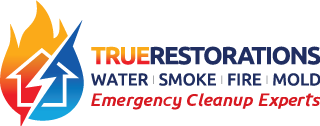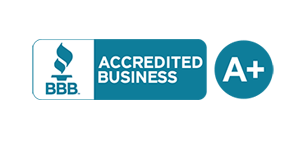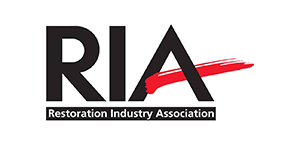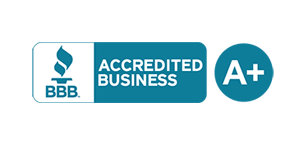Fire incidents can be devastating, leading to loss of property and, in severe cases, death. However, by taking certain fire damage prevention measures, you can reduce the chances of fire outbreaks at your home or workplace. In this section, we’ll discuss tips and strategies that you can use to minimize fire risks and ensure the safety of your loved ones and colleagues.
Key Takeaways:
- Implementing fire damage prevention tips can protect your home and workplace from fire incidents.
- Understanding fire hazards and risks can help you prevent fires from happening in the first place.
- There are specific fire safety measures that should be taken at home and in the workplace to minimize fire risks.
- Fire safety equipment such as fire extinguishers and smoke alarms should be maintained and checked periodically to ensure their effectiveness.
- By prioritizing fire damage prevention, you can protect yourself, your loved ones, and your property from devastating fire incidents.
Understanding Fire Hazards and Risks
Before you can effectively prevent fires, you must first understand the common hazards and risks that can lead to devastating damage. By knowing what to look for and being vigilant, you can help minimize the risk of fires in your home and workplace.
Electrical Faults
Electrical equipment and wiring are some of the most common sources of fire hazards. Faulty wiring, overloaded circuits, and damaged electrical cords can all contribute to the risk of electrical fires. It is essential to regularly inspect your electrical systems and ensure that they are up to code. If you notice any issues, address them immediately to prevent potential fires.
Flammable Materials
Flammable materials, such as gasoline, propane, and other chemicals, pose a significant risk of fires. It is crucial to store these materials in a safe location away from any sources of heat or flames. Additionally, be sure to dispose of these materials properly and according to local regulations.
Improper Storage of Chemicals
Improper storage of chemicals can also lead to fires. Be sure to store chemicals in their designated containers and follow all safety instructions regarding their storage. Avoid storing chemicals near heat sources and always keep them out of reach of children and pets.
Smoking
Smoking is a common cause of fires, both in homes and workplaces. If you smoke, always make sure to use designated smoking areas and never smoke near flammable materials or in areas with oxygen tanks. Additionally, be sure to properly extinguish cigarettes and dispose of them in appropriate receptacles.
Human Error
Finally, human error can also contribute to fires. For example, leaving cooking unattended, using faulty equipment, or improperly disposing of smoking materials can all lead to fires. To reduce the risk of human error, it is essential to properly train yourself and others on fire safety measures and ensure that everyone is aware of the potential risks.
Being aware of these common fire hazards and risks is the first step towards effective fire prevention. By taking the necessary precautions, maintaining your equipment, and staying vigilant, you can significantly reduce the risk of fires in your home and workplace.
Fire Safety Measures at Home
Implementing fire safety measures at home is crucial to minimize the risks of fires and protect your family and property. Here are some essential tips to follow:
- Install smoke detectors: Smoke detectors should be installed in every room of your home, including hallways. They should be tested regularly to ensure they are functioning properly.
- Maintain electrical systems: Faulty or outdated electrical systems can lead to fires. Make sure to have a professional inspect your home’s electrical system and appliances regularly.
- Practice safe cooking habits: Cooking is one of the leading causes of home fires. Always stay in the kitchen when cooking, keep flammable items away from the stove, and never leave cooking food unattended.
- Create a fire escape plan: In the event of a fire, it’s crucial to have a fire escape plan in place. Make sure everyone in your household knows the plan and conducts regular fire drills.
- Keep flammable items away from heat sources: Flammable materials such as curtains, paper, and cleaning supplies should be kept away from heat sources like candles, heaters, and light bulbs.
It’s important to note that different types of homes may require different fire safety measures. For example, if you live in a multi-story home, you may need to install escape ladders or invest in a fire suppression system. Always consult with a professional to determine the necessary safety measures for your home.
Remember, taking proactive measures to prevent fires at home is essential for the safety and well-being of your family.
Fire Prevention Strategies in the Workplace
Workplace safety should always be a top priority and fire prevention is no exception. It is crucial to implement a set of fire prevention strategies to reduce the risk of fire in the workplace. Here are some essential fire prevention techniques that you should consider:
Conduct Fire Risk Assessments
Conducting fire risk assessments is critical to identify potential fire hazards and risks in the workplace. By evaluating the workplace environment, you can determine the best course of action to reduce the risk of fire. As part of the assessment, you should also consider fire safety training for employees and emergency evacuation drills.
Ensure Proper Storage of Flammable Materials
Flammable materials are a common cause of workplace fires. It’s important to ensure proper storage of these materials to reduce the risk of fires. Consider storing flammable materials in designated areas with fire-resistant cabinets and containers. Posting clear signs and labeling these areas can also help minimize the risk of accidents.
Implement Fire Safety Training for Employees
Employees should be trained on fire prevention and safety measures. They should be aware of the potential fire hazards in the workplace and informed about the appropriate actions to take in case of a fire. Conducting regular training sessions and drills can help ensure that employees are well-prepared to handle an emergency situation.
Regularly Inspect Fire Suppression Systems
Fire suppression systems, such as fire extinguishers, sprinklers, and alarms, are essential for mitigating the risks of fire in the workplace. Regular inspections and maintenance of these systems are crucial to ensure they are in proper working order. It is recommended to have these systems inspected by a professional at least once a year.
Implementing these fire prevention strategies can help minimize the risks of fire in the workplace, ensuring the safety of employees and the protection of property. It’s essential to regularly review and update your fire prevention measures to keep up with any changes in the workplace environment or regulations.
Fire Safety Equipment and Maintenance
Fire safety equipment is crucial in preventing and minimizing fire damage. By having the right equipment and ensuring proper maintenance, you can mitigate the risk of fire in your home and workplace. Some of the essential fire safety equipment includes:
| Fire Equipment | Purpose |
|---|---|
| Fire extinguishers | Used to extinguish small fires |
| Smoke alarms | Detects smoke and raises the alarm |
| Sprinkler systems | Automatically activates to suppress fires |
It’s essential to ensure that the fire equipment you have is suitable for the type of fire hazard in your home or workplace. For instance, class A fire requires a different type of equipment than a class B fire.
Fire extinguishers are available in various types, including water, foam, powder, and CO2. Be sure to choose the right type of fire extinguisher suitable for the hazard in your home or workplace. Check the labels on the extinguishers for information on the type of fires they can handle.
Smoke alarms are another essential device for fire safety. They can detect smoke and sound an alarm, alerting you to the presence of fire. It’s crucial to test your smoke alarms regularly to ensure they are functioning correctly. Change their batteries twice a year.
Regular maintenance of fire safety equipment is also critical. Fire extinguishers, for instance, must be checked and serviced annually by a competent individual. The pressure level and nozzle must be in good condition, and the extinguisher must be charged correctly. For smoke alarms, dust them regularly and follow the manufacturer’s instructions for maintenance and replacement.
In conclusion, fire safety equipment is a critical component of fire damage prevention. Ensure that you have the right equipment and that it’s correctly maintained to mitigate the risks of fires in your home or workplace. By doing so, you protect yourself, your loved ones, and your property from the devastating effects of fire.
Conclusion
By following these fire damage prevention tips, both at home and in the workplace, you can significantly reduce the risks of fires and protect yourself, your loved ones, and your property. Remember that fire safety is not a one-time task, but an ongoing process that requires constant attention and vigilance.
Regularly review and update your fire safety measures, and prioritize the well-being and safety of everyone around you. Make sure that you have adequate fire safety equipment installed, such as smoke detectors and fire extinguishers, and that they are properly maintained.
Lastly, it is always a good idea to conduct fire drills and practice your fire escape plan with your family or colleagues to ensure that everyone is prepared in case of an emergency. By taking these steps, you can ensure a safer environment for yourself, your loved ones, and your colleagues.
FAQ
What are some fire damage prevention tips for home and work?
Some fire damage prevention tips include installing smoke detectors, maintaining electrical systems, practicing safe cooking habits, conducting fire risk assessments, and ensuring proper storage of flammable materials.
What are common fire hazards and risks?
Common fire hazards and risks include electrical faults, flammable materials, improper storage of chemicals, and lack of fire safety measures.
What fire safety measures should be implemented at home?
Fire safety measures at home include installing smoke detectors, maintaining electrical systems, practicing safe cooking habits, and creating a fire escape plan for your family.
What fire prevention strategies are important in the workplace?
Fire prevention strategies in the workplace include conducting fire risk assessments, ensuring proper storage of flammable materials, implementing fire safety training for employees, and regularly inspecting fire suppression systems.
What fire safety equipment is essential and how should it be maintained?
Essential fire safety equipment includes fire extinguishers and smoke alarms. Fire extinguishers should be properly maintained and inspected regularly, and smoke alarms should be tested monthly and replaced every 10 years.

























